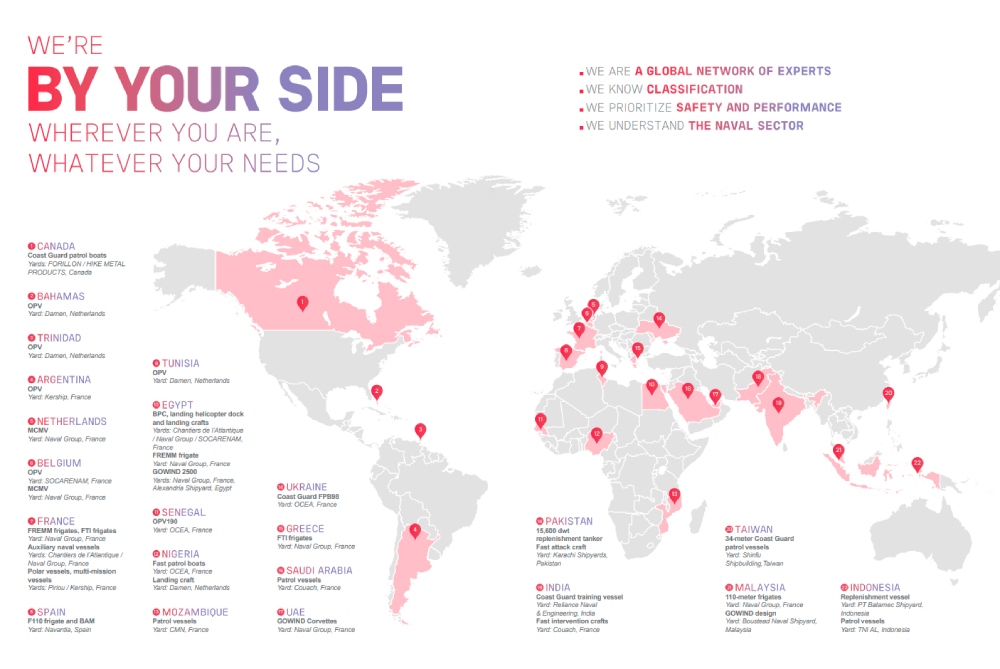Naval Ships
Navies and governments around the world demand efficient, resilient ships for their fleets. With Bureau Veritas’ expertise, your naval vessels can meet international and national standards of safety and performance.
Leadership in safety design for Navies
Naval vessel operations often require specialized equipment and unique ship layouts. The rigorous safety standards for patrol and combat vessels are regularly updated, and navies cannot risk falling behind. Construction quality is of the utmost importance, and older vessels may require dismantling to make way for newer models.
Above all, the safety of crew members creates a need for optimized ship design and thorough review of vessels during the construction phase.
How we support you
Bureau Veritas supports navies with dedicated classification Rules based on our experience across the wider shipping industry. We help you reconcile military specifications with safety objectives via design review and technical assessment of your vessels.
Today’s naval ships are far ahead of where they were a decade ago, thanks to intelligent data and real-time, connected equipment. However, digitalization has also presented serious challenges to such ships. With cyber-attacks increasing in both sophistication and frequency, the industry can no longer afford to continue doing ‘business as usual.’
Bureau Veritas is helping clients rise to this challenge with our leading cyber security services. We have leveraged our expertise in smart ships, networks, telecommunications, ship design, and safety to provide:
- Cyber compliance, detailed notations and practical guidelines for both new buildings and ships in service
- A worldwide network of cybersecurity experts to secure ship designs and run efficient testing
- Regulation compliance for BIMCO, IACS, ICS, IMO, OCIMF, Flag administration, and more
Photo Credit: Naval Group, DCNS
Read our naval ships brochure














